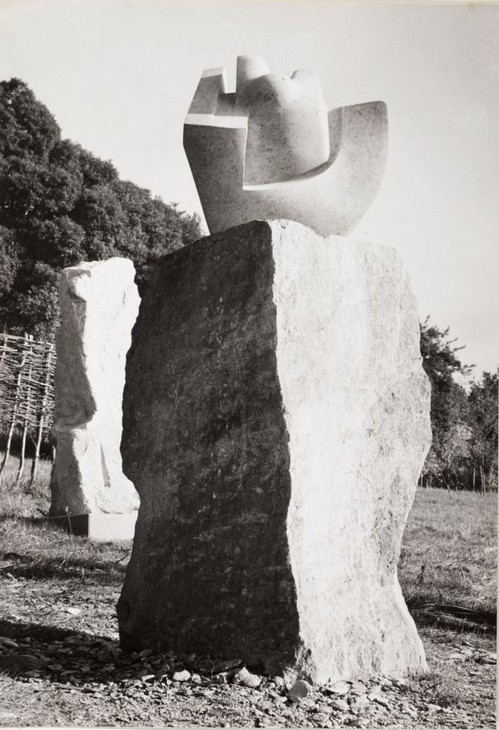Photograph of Henry Moore's Sculpture 1937, taken at Burcroft
In a letter written to the painter Paul Nash on 15 September 1933 Moore expressed a desire to establish a place to work that would have ‘in the middle of it a large rough-axed monolith much as one of the Stonehenge pieces’ (see Henry Moore, letter to Paul Nash, 15 September 1933, TGA 8313/1/2/153). In 1935 Moore moved to a cottage called Burcroft, in Kingston, Kent. Attached to the cottage was five acres of land, and in 1937, with the help of his carving assistant Bernard Meadows, Moore created his own ‘Stonehenge’ of rough hewn plinths for his modernist sculptures.
How to cite
Photograph of Henry Moore's Sculpture 1937, taken at Burcroft, in Henry Moore: Sculptural Process and Public Identity, Tate Research Publication, 2015, https://www

